Full text
PDF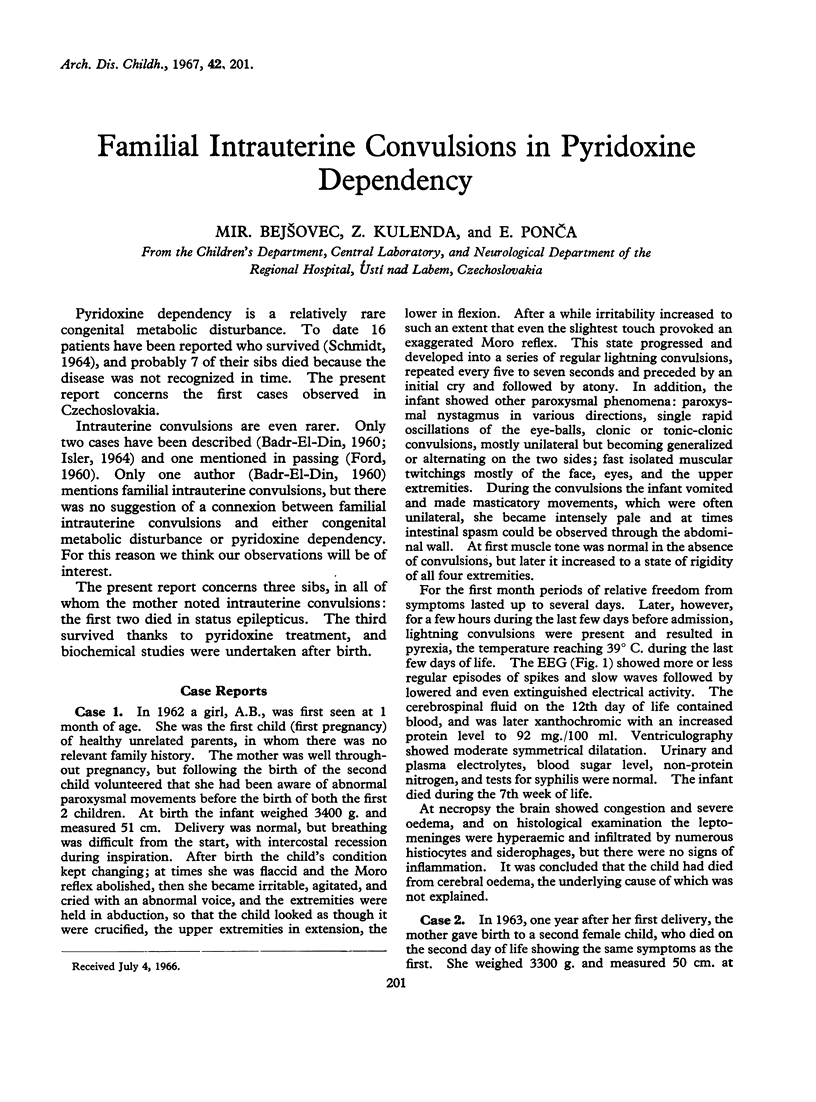
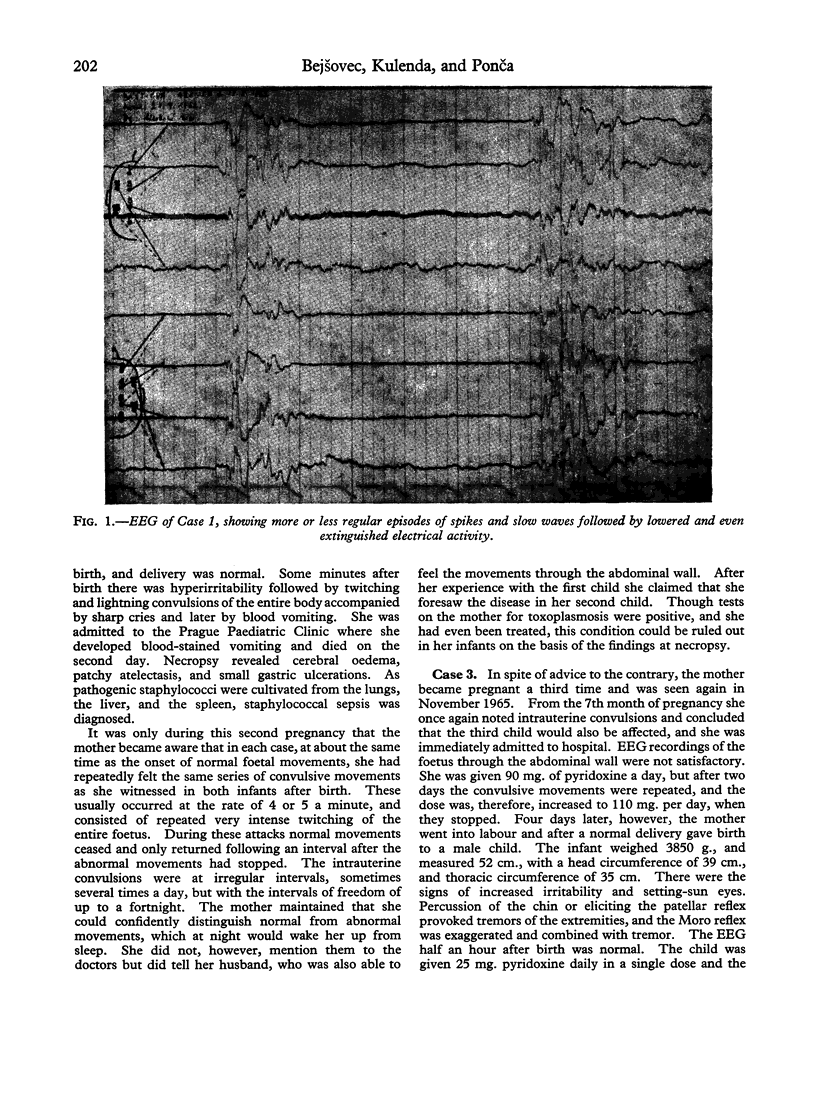

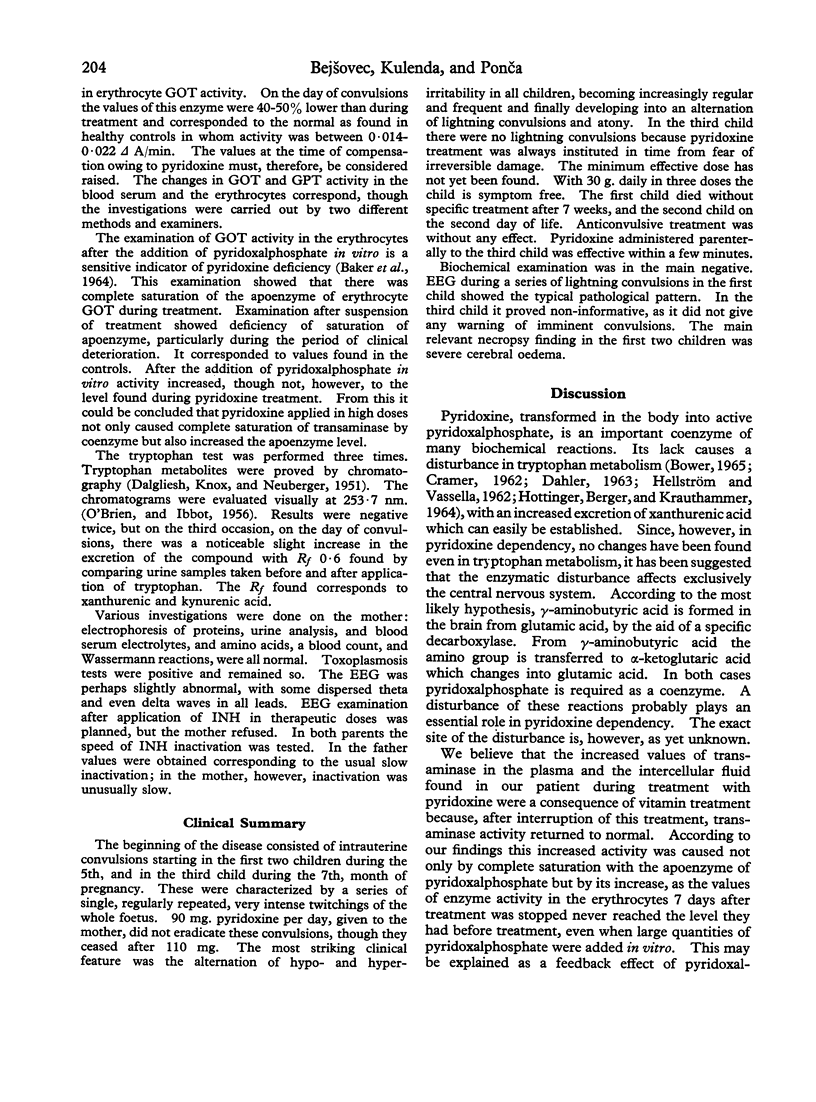
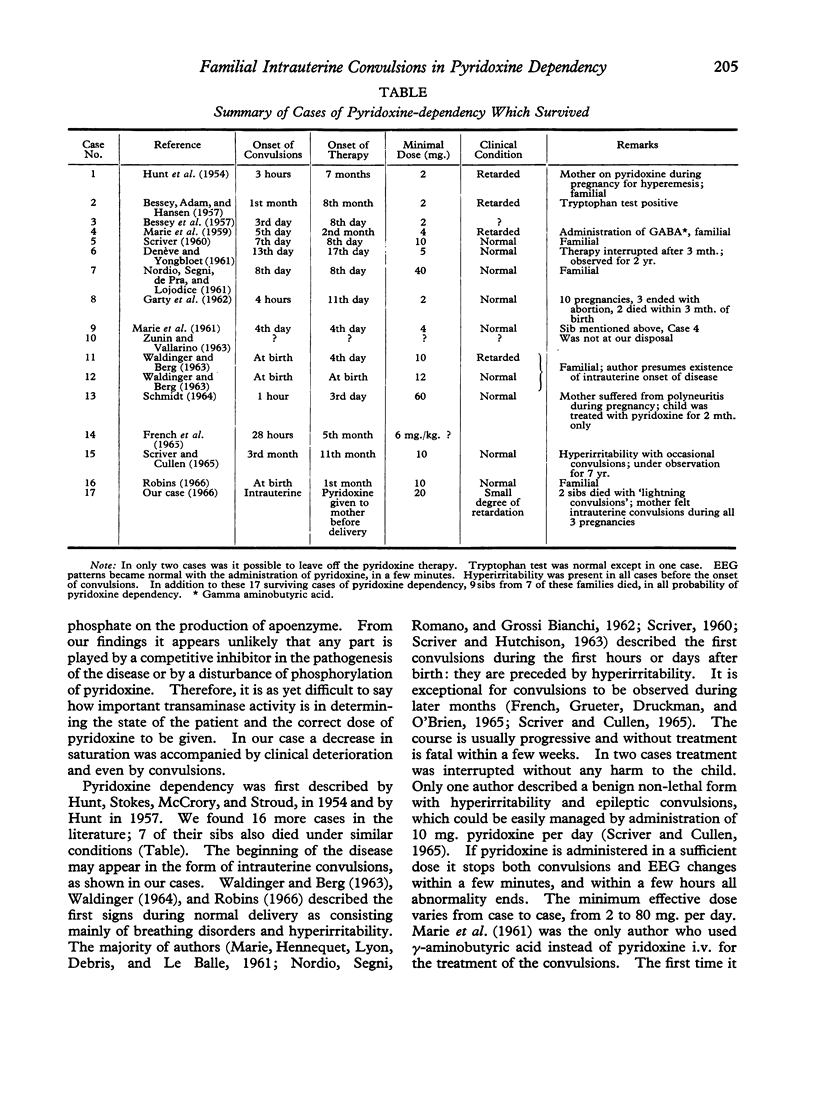
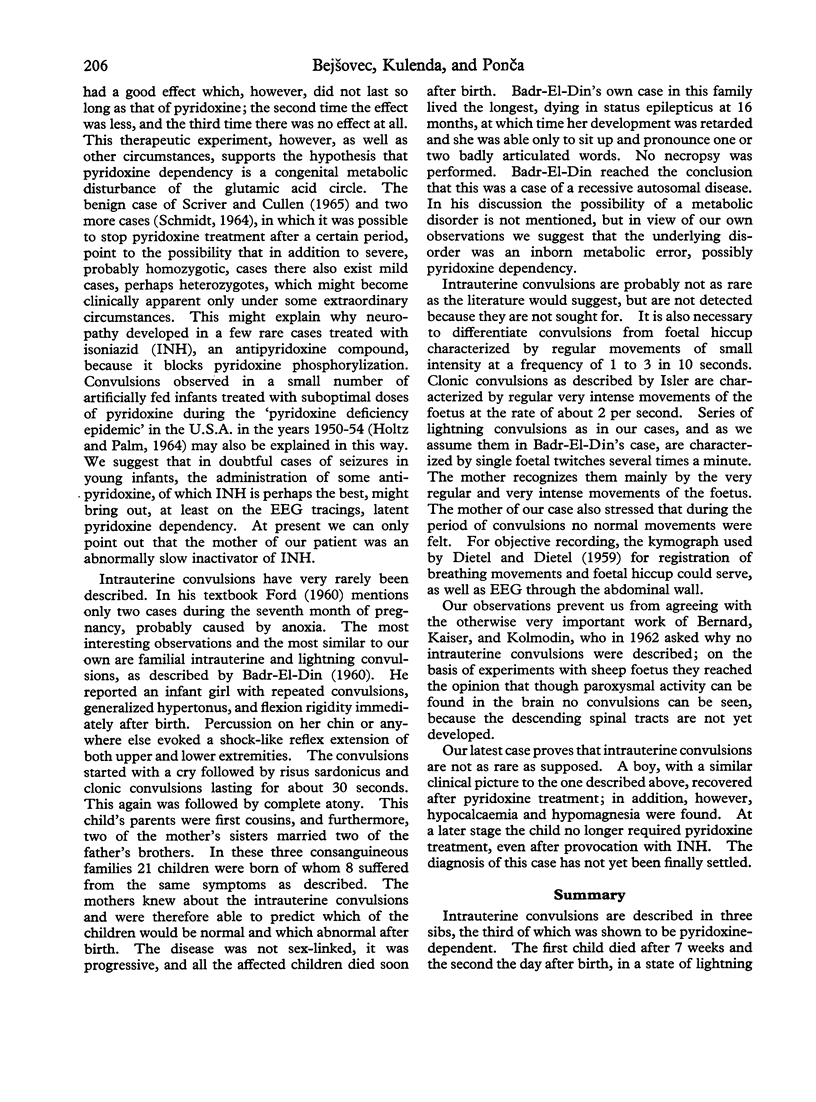

Images in this article
Selected References
These references are in PubMed. This may not be the complete list of references from this article.
- BAKER E. M., CANHAM J. E., NUNES W. T., SAUBERLICH H. E., MCDOWELL M. E. VITAMIN B6 REQUIREMENT FOR ADULT MEN. Am J Clin Nutr. 1964 Aug;15:59–66. doi: 10.1093/ajcn/15.2.59. [DOI] [PubMed] [Google Scholar]
- BERNHARD C. G., KAISER I. H., KOLMODIN G. M. On the epileptogenic properties of the fetal brain. An electrophysiological study on the electrically and chemically induced convulsive brain activity in sheep fetuses. Acta Paediatr. 1962 Jan;51:81–87. doi: 10.1111/j.1651-2227.1962.tb06512.x. [DOI] [PubMed] [Google Scholar]
- BESSEY O. A., ADAM D. J., HANSEN A. E. Intake of vitamin B6 and infantile convulsions: a first approximation of requirements of pyridoxine in infants. Pediatrics. 1957 Jul;20(1 Pt 1):33–44. [PubMed] [Google Scholar]
- BOWER B. D. PYRIDOXINE, TRYPTOPHAN AND EPILEPSY. Dev Med Child Neurol. 1965 Feb;7:73–74. [PubMed] [Google Scholar]
- CRAMER H. [Pyridoxin-dependent convulsions in infants. Metabolic-genetic epilepsy]. Dtsch Med Wochenschr. 1962 Aug 10;87:1577–1578. doi: 10.1055/s-0028-1112104. [DOI] [PubMed] [Google Scholar]
- DAHLER R. P. [Investigations of tryptophane degradation and vitamin B-6 metabolism in the newborn and in the young infant]. Ann Paediatr. 1963;200:346–362. [PubMed] [Google Scholar]
- DALGLIESH C. E., KNOX W. E., NEUBERGER A. Intermediary metabolism of tryptophan. Nature. 1951 Jul 7;168(4262):20–22. doi: 10.1038/168020a0. [DOI] [PubMed] [Google Scholar]
- DENEVE V., JONGBLOET P. [Convulsions in the neonatal period modified by pyridoxine]. Maandschr Kindergeneeskd. 1961 Jun;29:177–188. [PubMed] [Google Scholar]
- DIETEL K., DIETEL V. [On singultus in intra-uterine respiratory movements]. Kinderarztl Prax. 1959 Oct;27:453–457. [PubMed] [Google Scholar]
- EL-DIN M. K. A familial convulsive disorder with an unusual onset during intrauterine life: a case report. J Pediatr. 1960 May;56:655–657. doi: 10.1016/s0022-3476(60)80340-x. [DOI] [PubMed] [Google Scholar]
- FRENCH J. H., GRUETER B. B., DRUCKMAN R., O'BRIEN D. PYRIDOXINE AND INFANTILE MYOCLONIC SEIZURES. Neurology. 1965 Feb;15:101–113. doi: 10.1212/wnl.15.2.101. [DOI] [PubMed] [Google Scholar]
- GARTY R., YONIS Z., BRAHAM J., STEINITZ K. Pyridoxine-dependent convulsions in an infant. Arch Dis Child. 1962 Feb;37:21–24. doi: 10.1136/adc.37.191.21. [DOI] [PMC free article] [PubMed] [Google Scholar]
- HELLSTROM B., VASSELLA F. Tryptophan metabolism in infantile spasm. Acta Paediatr. 1962 Nov;51:665–673. doi: 10.1111/j.1651-2227.1962.tb06599.x. [DOI] [PubMed] [Google Scholar]
- HOLTZ P., PALM D. PHARMACOLOGICAL ASPECTS OF VITAMIN B6. Pharmacol Rev. 1964 Jun;16:113–178. [PubMed] [Google Scholar]
- HOTTINGER A., BERGER H., KRAUTHAMMER W. KLINISCHE BEOBACHTUNGEN ZUM PROBLEM DES VITAMIN-B6-METABOLISMUS. Schweiz Med Wochenschr. 1964 Feb 15;94:221–228. [PubMed] [Google Scholar]
- HUNT A. D., Jr Abnormally high pyridoxine requirement; summary of evidence suggesting relation between this finding and clinical pyridoxine "deficiency". Am J Clin Nutr. 1957 Sep-Oct;5(5):561–565. doi: 10.1093/ajcn/5.5.561. [DOI] [PubMed] [Google Scholar]
- HUNT A. D., Jr, STOKES J., Jr, McCRORY W. W., STROUD H. H. Pyridoxine dependency: report of a case of intractable convulsions in an infant controlled by pyridoxine. Pediatrics. 1954 Feb;13(2):140–145. [PubMed] [Google Scholar]
- ISLER W. FOETALE EPILEPTISCHE ANFAELLE MITTEILUNG EINES FALLES. Helv Paediatr Acta. 1964 Oct;19:318–325. [PubMed] [Google Scholar]
- MARIE J., HENNEQUET A., LYON G., DEBRIS P., LE BALLE J. C. Les crises convulsives pyridoxino-sensibles du nouveau-né et du nourrisson. Sem Hop. 1959 Apr 24;35(19/4):1411–21/P. [PubMed] [Google Scholar]
- NORDIO S., SEGNI G., GANDULLIA E. ["Pyridoxine-dependent convulsions". Ist report in Italian literature]. Minerva Pediatr. 1961 Jul 14;13:925–929. [PubMed] [Google Scholar]
- NORDIO S., SEGNI G., ROMANO C., GROSSI BIANCHI M. L. [Unusual diseases which are susceptible to treatment with pyridoxine]. Monatsschr Kinderheilkd. 1962 Mar;110:116–118. [PubMed] [Google Scholar]
- RAICA N., Jr, SAUBERLICH H. E. BLOOD CELL TRANSAMINASE ACTIVITY IN HUMAN VITAMIN B6 DEFICIENCY. Am J Clin Nutr. 1964 Aug;15:67–72. doi: 10.1093/ajcn/15.2.67. [DOI] [PubMed] [Google Scholar]
- REITMAN S., FRANKEL S. A colorimetric method for the determination of serum glutamic oxalacetic and glutamic pyruvic transaminases. Am J Clin Pathol. 1957 Jul;28(1):56–63. doi: 10.1093/ajcp/28.1.56. [DOI] [PubMed] [Google Scholar]
- Robins M. M. Pyridoxine dependency convulsions in a newborn. JAMA. 1966 Feb 7;195(6):491–493. [PubMed] [Google Scholar]
- SCHMIDT E. ZUM KRANKHEITSBILD DER VITAMIN B6-(PYRIDOXIN)-ABHAENGIGKEIT BEIM NEUGEBORENEN. Z Kinderheilkd. 1964 Apr 8;89:211–221. [PubMed] [Google Scholar]
- SCRIVER C. R., HUTCHISON J. H. The vitamin B6 deficiency syndrome in human infancy: biochemical and clinical observations. Pediatrics. 1963 Feb;31:240–250. [PubMed] [Google Scholar]
- SCRIVER C. R. Vitamin B6-dependency and infantile convulsions. Pediatrics. 1960 Jul;26:62–74. [PubMed] [Google Scholar]
- WALDINGER C., BERG R. B. SIGNS OF PYRIDOXINE DEPENDENCY MANIFEST AT BIRTH IN SIBLINGS. Pediatrics. 1963 Aug;32:161–168. [PubMed] [Google Scholar]
- WALDINGER C. PRIDOXINE DEFICIENCY AND PYRIDOXINE DEPENDENCY IN INFANTS AND CHILDREN. Postgrad Med. 1964 Apr;35:415–422. doi: 10.1080/00325481.1964.11695089. [DOI] [PubMed] [Google Scholar]
- ZUNIN C., VALLARINO G. LE CRISI CONVULSIVE SENSIBILI ALLA PIRIDOSSINA. PRESENTAZIONE DI UN CASO. Minerva Pediatr. 1963 Sep 22;15:975–978. [PubMed] [Google Scholar]



